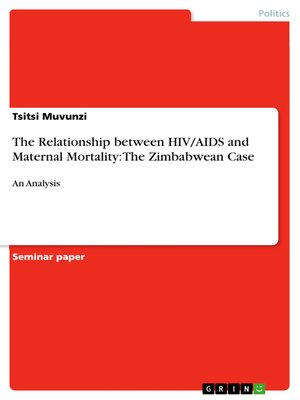The Relationship between HIV/AIDS and Maternal Mortality
ebook ∣ The Zimbabwean Case: An Analysis
By Tsitsi Muvunzi

Sign up to save your library
With an OverDrive account, you can save your favorite libraries for at-a-glance information about availability. Find out more about OverDrive accounts.
Find this title in Libby, the library reading app by OverDrive.



Search for a digital library with this title
Title found at these libraries:
| Library Name | Distance |
|---|---|
| Loading... |
Seminar paper from the year 2011 in the subject Politics - Topic: Public International Law and Human Rights, grade: A-, Ewha Womans University (Graduate School of International Studies), course: Women and Human Rights, language: English, abstract: One of the major fundamental principles of modern development theories is the acknowledgement that HIV/AIDS is at the root of high levels of maternal mortality in third world countries and that a decrease in HIV/AIDS should correspond directly with a decline in maternal mortality statistics. This is premised on the assumption that, it is a reflection of positive development, where development as a field of analysis is concerned. Whereas this principle fits in most of the development situations across the third world, it does not seem to apply in the case of Zimbabwe. Health statistics in Zimbabwe reflect that while HIV/AIDS prevalence rate among the adult population has declined over the years (from 26.5% in 2002 to 13.7% in 2009), maternal mortality ratio has increased (from 283 per 100 000 live births in 1994 to 1300 per 100 000 live births in 2009) as revealed by the Central Statistical Report (2010) and the Zimbabwe 2004 MDG Report.







